Far too many women (myself included) have left a doctor’s appointment with two pieces of very vague information:
- I have Polycystic Ovary Syndrome.
- I should start working out.
If you are ready and willing to start exercising, but don’t know what types of exercise are best for PCOS, this article will point you in the right direction.
Today I’d like to teach you exactly how to add High-Intensity Interval Training (HIIT) into your workout program.
HIIT is a type of cardio workout that alternates between bouts of extremely challenging, fast-paced exercise and bouts of low-intensity exercise. For example, you might alternate between sprinting up a steep hill and walking on a flat surface. I talked in detail about the benefits of HIIT in my article on Cardio Exercise and PCOS.
A recent study from the University of California San Francisco found that intense workouts are better for managing PCOS than moderate exercise. The researchers concluded that doing just 60 minutes of vigorous exercise per week decreased a woman’s likelihood of getting metabolic syndrome by 22%.
This particular study and several more like it are a powerful testament to the benefits of high-intensity exercise for PCOS women. Research indicates that HIIT workouts can improve your insulin sensitivity, reduce your waist circumference, stimulate muscle growth and burn fat.
Ready to try HIIT so that you can enjoy all of these wonderful benefits?
Below are three simple HIIT workouts you can try today.
The 10-20-30 Workout
This HIIT program is a great method for beginners and intermediate trainees! Researchers at the University of Copenhagen created this workout in 2012. They only applied the 10-20-30 HIIT formula to running. If you don’t like to run, this method will work well on a stationary or regular bicycle.
- Warm up with dynamic stretches or light jogging.
- Sprint at full speed for 10 seconds, really push yourself!
- Don’t pause, but decrease your speed to a medium pace for the next 20 seconds.
- Decrease your speed again to a slow paced jog, brisk walk or slow pedal for 30 seconds.
- Immediately return to your 10 second sprint.
- Repeat this cycle for five minutes and then rest for two minutes.
- Following the rest period, start another five minute block of running or cycling.
- Continue this pattern for 20-30 minutes.
You can do this workout after a strength training session or by itself 2-3 times a week.
The Little Method
The Little Method was first studied at McMasters University and is a great intermediate level HIIT workout. This program would work well on a stationary bike, rowing machine, elliptical machine, a treadmill with an incline, or a stair climber.
- Warm up with dynamic stretches followed by slow-paced cardio for 3 minutes.
- Set your machine at a high resistance or incline and move at a fast pace for 60 seconds.
- Keep moving, but reduce your resistance and pace to a moderate level for 75-seconds.
- Repeat this cycle 12 times for a total of 27 minutes.
You can do this workout up to three times a week.
The Tabata Method
The Tabata Method is a challenging HIIT workout for advanced exercisers. I recommend that you start with one of the other two methods before moving on to Tabata style workouts.
You can apply this method to sprinting, kettlebell exercises like the kettlebell swing and plyometric exercises like box jumps and jumping rope.
- Warm up with dynamic stretches followed by slow-paced cardio for 3 minutes.
- Perform your exercise of choice at full speed for 20 seconds, push yourself hard!
- Recover for 10 seconds, I recommend walking or lightly marching in place.
- Repeat this cycle 8 times for a total of 4 minutes.
This workout only lasts 4 minutes. You can add it on to the end of your strength workout. Or if you feel up to it, you can repeat the 4-minute cycle several times.
In addition to being great for PCOS, these three workouts are very time efficient and flexible. That’s why I have been using HIIT for over four years! I’ve seen great results and the flexibility allows me to mix things up and keep my workouts interesting.
What do you do to keep your workouts fun and fresh? Have you tried incorporating HIIT?
Erika
Erika is a certified personal trainer, Nutrition Coach, and fitness writer. She holds certifications from the American Council on Exercise (ACE), TRX Suspension Training Systems and Precision Nutrition.
Erika was diagnosed with PCOS in 2005. She believes that lifestyle modifications are the best treatment for PCOS. If you want to learn more about how exercise can alleviate PCOS symptoms, please visit her website at The PCOS Personal Trainer.
Erika lives with her husband in a small beach town somewhere in Costa Rica. Her hobbies include cooking, hiking, learning Spanish and traveling. At The PCOS Personal Trainer you’ll find at-home workout plans, healthy cooking tips, and stories about her life in Costa Rica
- sustainable pcos weight loss strategies
- Over 5500 women have done it and seen results
- [bonus] Done for you pcos meal plans
- [bonus] intermittent fasting for pcos course
- [BONUS] personalised nutrition plan
JOIN OVER 5,500 OTHERS









